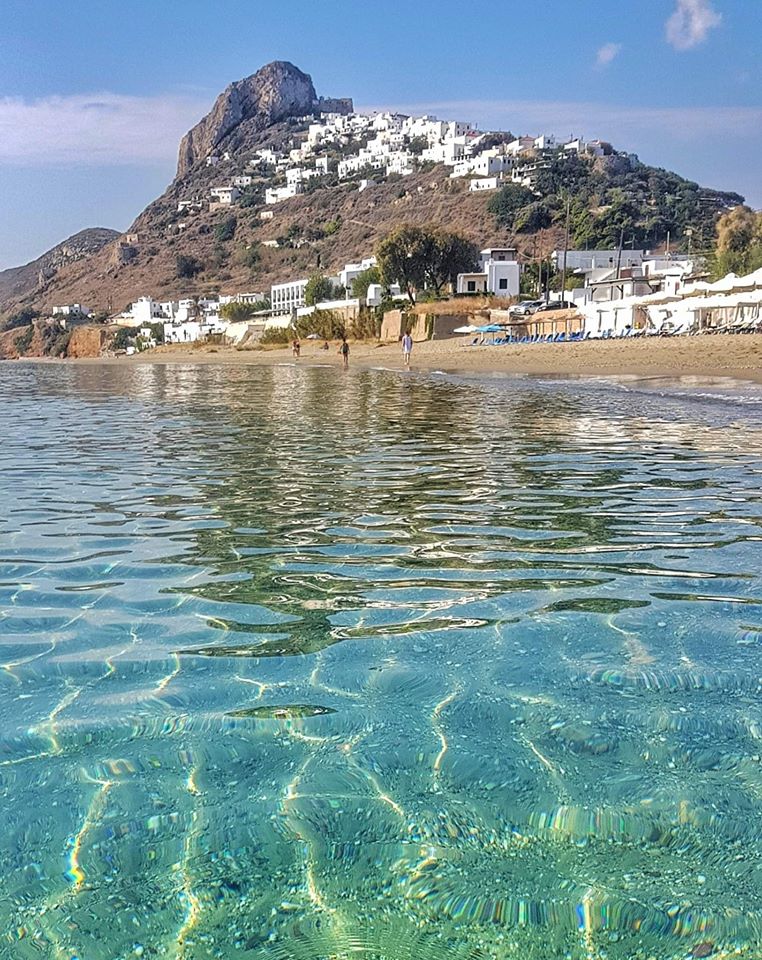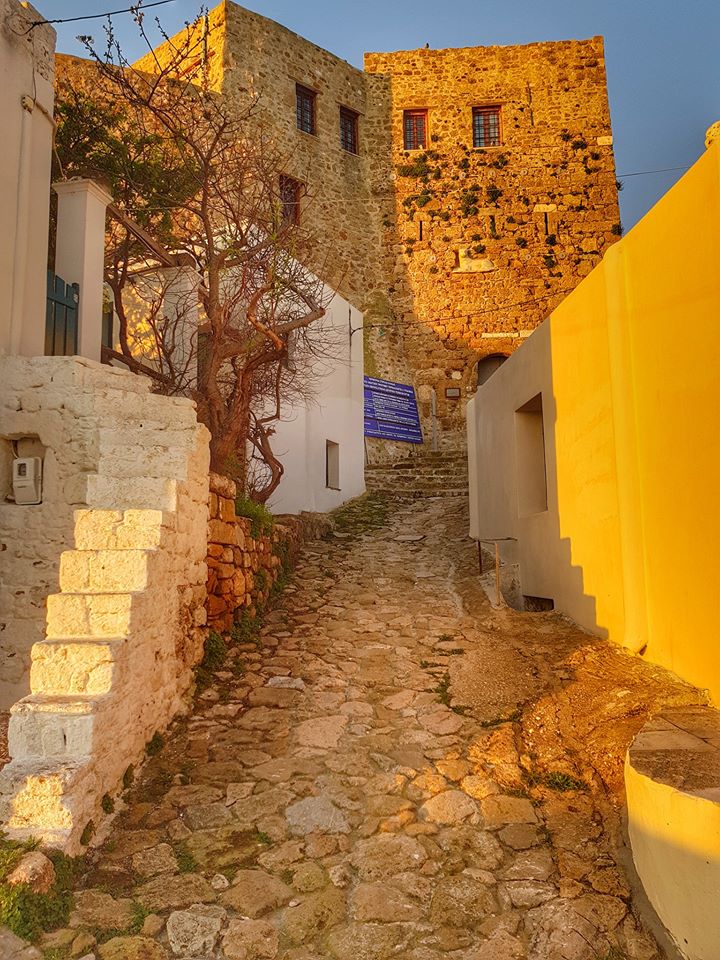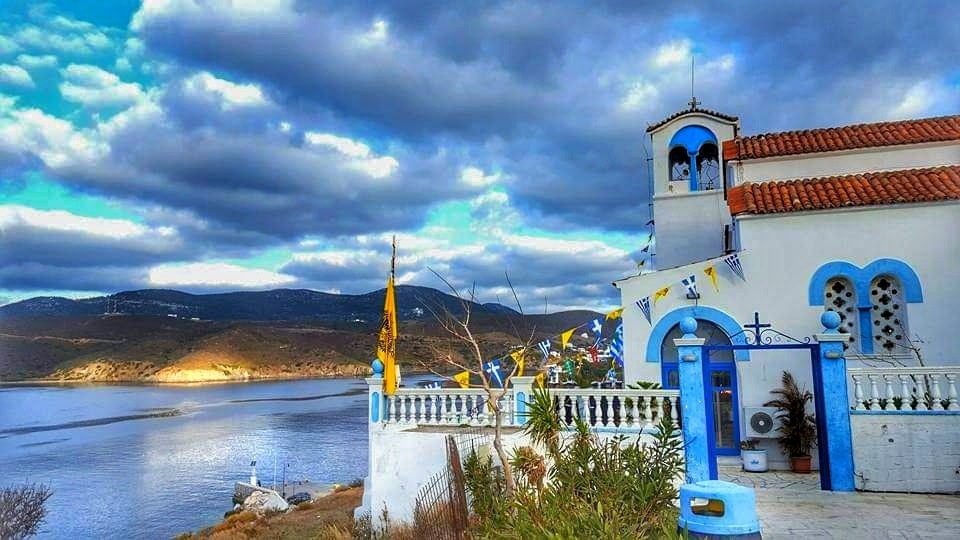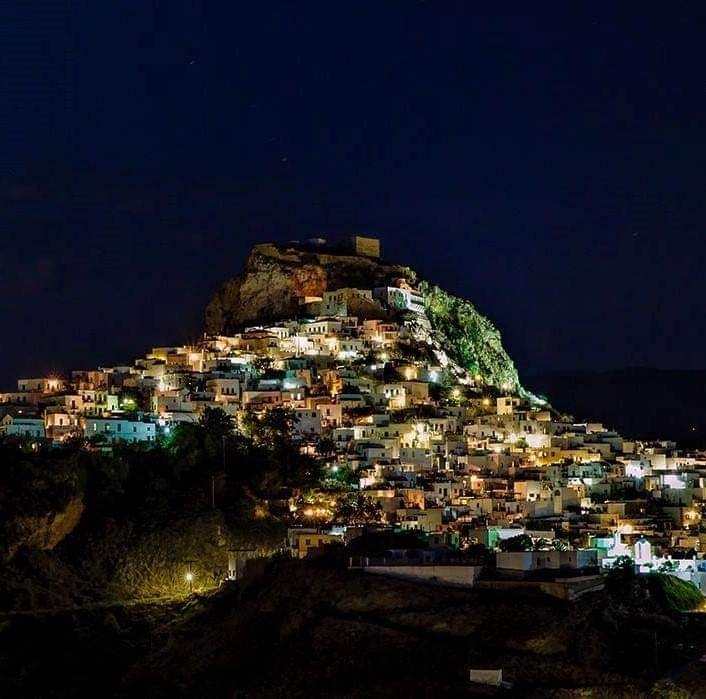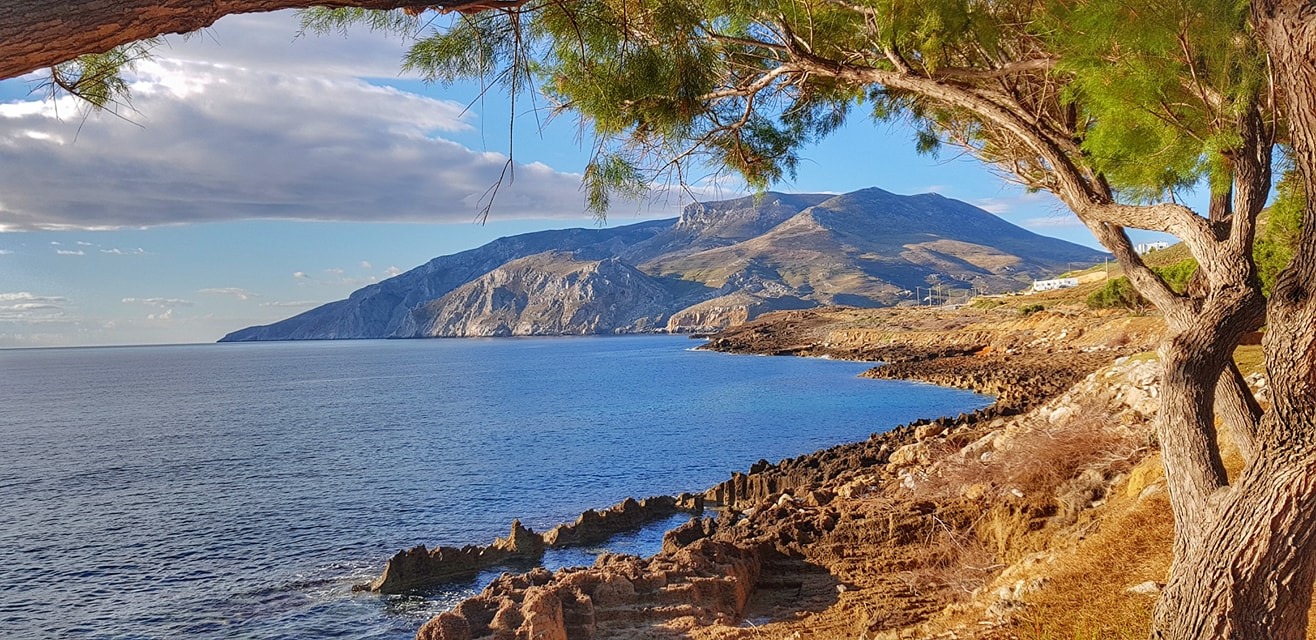Beaches & Skyros Town
The sea around these islands is wonderful for fishing. Skyros is famous for its sandy beaches, Magazia (Yialos), Mobs, Aghios Petros, Theotokos, Kyria Panagia, Atsitsa, Aghios Fokas, Pefkos, Aherounes, Kolymbada, Tris Boukes, Renes, Achilli, Mealos and the “official” nudist beach of Tou Papa to Homa. The Forests that cover around 32% of the island, consist mostly of pine trees. Considering the size of the island, there are few populated areas.
The main area being that of Skyros town itself. Originally a village, it is still called “Chorio” by the locals. Gradually it has spread and been joined to Magazia in the east. Kabos and Molos in the north and Plagia and Aghia in the south. Now it is a thriving, country town. 80% of the population of Skyros lives in the town. The town itself has many fascinating sights and places to visit. Start by exploring the tiny, winding streets, peep into the Skyrean houses, each one like a tiny museum with its copperware and local pottery adorning the walls. Climb to the ancient castle with the monastery of Aghios Georgios just beneath. Visit the town museums, between which stands the statue of Rupert Brooke. Breathe and absorb the atmosphere of ancient mythology, history, folklore and the pride of the local inhabitants. There are many publications about Skyros available in the local shops.

